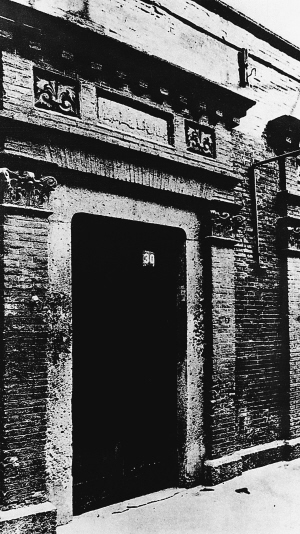More languages
More actions

The 2nd National Congress of the Communist Party of China (中国共产党第二次全国代表大会) was held in Shanghai from July 16 to 23, 1922. 12 representatives attended the meeting representing 195 party members. The representatives attending were Chen Duxiu, Zhang Guotao, and Li Da, Yang Mingzhai, Luo Zhanglong, Wang Jinmei, Xu Baihao, Cai Hesen, Tan Pingshan, Li Zhenying, Shi Cuntong, and one unknown member.[1]
Secrecy Measures
After the destruction of the 1st National Congress by French patrols, the 2nd National Congress adopted stricter secrecy measures. Among those measures included a focus on small group meetings, a minimization of the number of plenary meetings, and a change of address for each meeting.[1]
Measures Passed
The congress passed the "Manifesto of the Second National Congress of the Communist Party of China", "The Constitution of the Communist Party of China", the resolution on "The General Trend of the World and the Chinese Communist Party", the resolution on "International Imperialism and China and the Chinese Communist Party", the resolution on "United Front of Democracy", "The Chinese Communist Resolutions of the Third International", "Resolutions on Parliamentary Action", "Resolutions on Trade Union Movement and the Communist Party", "Resolutions on Questions of the Youth Movement", "Resolutions on the Women's Movement", "Resolutions on the Communist Party", and 9 resolutions including the "Articles of Association Resolution".[1]
Election Results
The General Assembly elected the Central Executive Committee, which was made up by Chen Duxiu, Deng Zhongxia, Zhang Guotao, Cai Hesen, and Gao Junyu, as well as three alternative members. Chen Duxiu was elected chairman of the Central Executive Committee, while Cai Hesen and Zhang Guotao were responsible for the party's propaganda and organizational work.[1]
Maximum and Minimum Program
The congress formulated the Maximum and Minimum Program, which established maximum goals over time and minimum programs under the current historical conditions. The maximum goals were to organize the proletariat, use the means of class struggle, establish the politics of the dictatorship of labor and peasants, eradicate the private property system, and gradually achieve a communist society. The minimum programs were to eliminate civil strife, overthrow warlords, and build domestic peace; overthrow the oppression of international imperialism and achieve the complete independence of the Chinese nation; unify China into a true democracy republic.[1]
